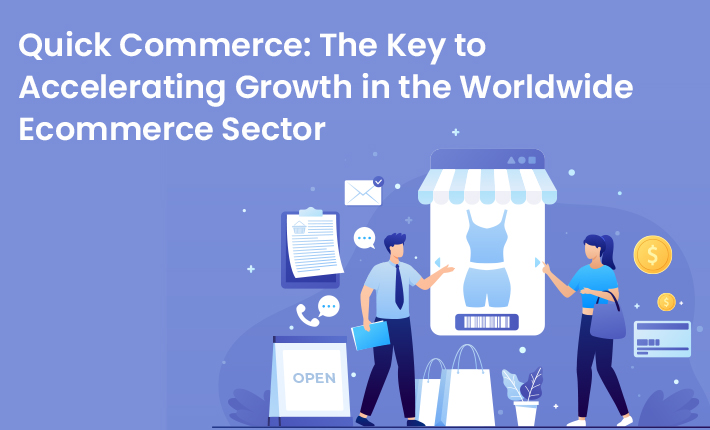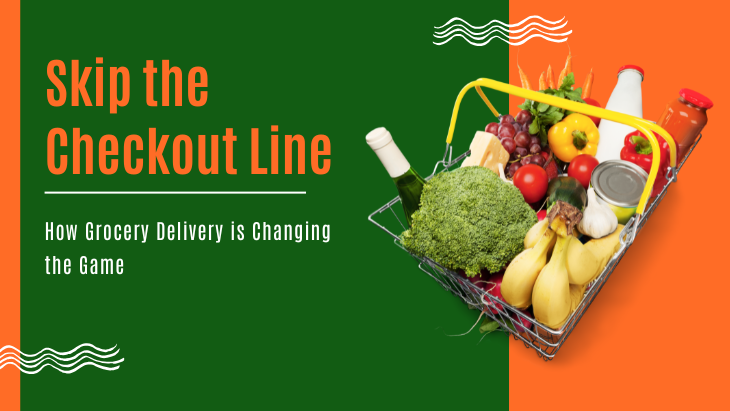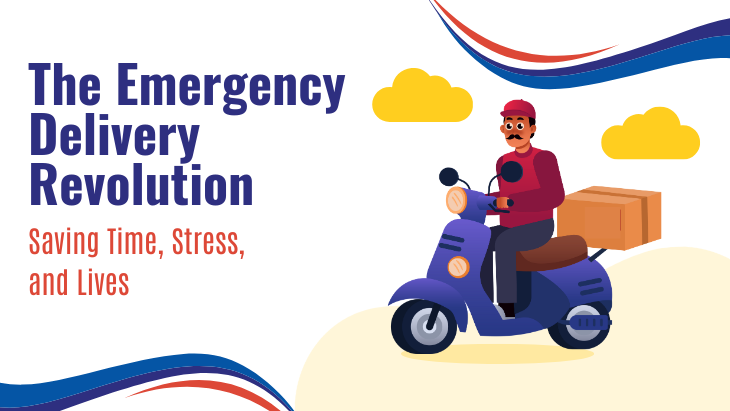Understanding the Worldwide Ecommerce Sector
The worldwide ecommerce sector has experienced explosive growth in recent years, driven by advancements in technology and changes in consumer behavior. With the convenience of online shopping becoming increasingly popular, ecommerce has become a trillion-dollar industry. According to Statista, global ecommerce sales are projected to reach $6.54 trillion by 2022. This unprecedented growth presents businesses with both opportunities and challenges.
The rise of ecommerce has fundamentally changed the way we shop. Consumers can now browse and purchase products from the comfort of their own homes, with just a few clicks. This convenience has fueled the demand for quick and efficient delivery options, as customers are no longer willing to wait days or weeks for their purchases to arrive. As a result, businesses must adapt their operations to meet these changing expectations.
The Need for Speed: How Quick Commerce Drives Growth
In the world of ecommerce, speed is king. Customers want their orders delivered as quickly as possible, and businesses that can meet these expectations are more likely to succeed. This is where quick commerce comes into play. Quick commerce is all about providing fast and efficient delivery options to customers, ensuring that their orders arrive in record time.
By embracing quick commerce, businesses can gain a competitive edge and drive growth in the ecommerce sector. Speedy deliveries not only enhance the customer experience but also foster loyalty and encourage repeat purchases. According to a report by McKinsey, customers who receive their orders quickly are more likely to become repeat buyers and recommend the brand to others. This word-of-mouth marketing can significantly impact a business's bottom line.
Quick Commerce Success Stories
Several businesses have successfully implemented quick commerce strategies and reaped the rewards. One notable success story is that of Amazon. The retail giant has revolutionized the ecommerce industry with its Prime delivery service, which promises fast and free shipping on millions of items. This commitment to quick commerce has made Amazon the go-to online shopping destination for millions of customers worldwide.
Another success story is that of food delivery platforms like Uber Eats and DoorDash. These platforms have leveraged quick commerce to offer on-demand food delivery services, allowing customers to order their favorite meals and have them delivered in a matter of minutes. This convenience has transformed the food delivery industry and opened up new opportunities for restaurants and food businesses.
Key Components of Quick Commerce
Implementing quick commerce requires a holistic approach that takes into account various key components. Firstly, businesses need to invest in advanced technology and infrastructure to enable fast and efficient order fulfillment. This includes implementing automation and robotics to streamline warehouse operations and reduce human error. Additionally, real-time inventory management systems are crucial for ensuring accurate stock levels and preventing delays in order processing.
Secondly, businesses must optimize their logistics and transportation networks to minimize delivery times. This may involve partnering with third-party logistics providers or utilizing innovative delivery methods, such as drones or autonomous vehicles. By leveraging technology and optimizing logistics, businesses can significantly reduce delivery times and meet customer expectations.
Implementing Quick Commerce Strategies
To successfully implement quick commerce strategies, businesses must first understand their customers' needs and preferences. Conducting market research and gathering customer feedback can provide valuable insights into what drives purchasing decisions and what aspects of the delivery experience are most important to customers. Armed with this knowledge, businesses can tailor their quick commerce strategies to meet these specific needs.
Another key aspect of implementing quick commerce strategies is optimizing the order fulfillment process. This involves streamlining warehouse operations, reducing order processing times, and implementing efficient picking and packing systems. By minimizing bottlenecks and eliminating unnecessary steps in the fulfillment process, businesses can ensure that orders are dispatched quickly and accurately.
Overcoming Challenges in Quick Commerce
While quick commerce offers numerous benefits, it also presents challenges that businesses must overcome. One of the main challenges is managing customer expectations. As customers become accustomed to fast and efficient delivery options, their expectations continue to rise. Businesses must find ways to consistently meet these expectations without compromising on quality or incurring excessive costs.
Another challenge is the cost associated with implementing quick commerce strategies. Investing in technology, infrastructure, and logistics can be expensive, especially for small and medium-sized businesses. However, the potential return on investment can far outweigh the initial costs, as quick commerce can drive revenue growth and customer loyalty.
The Future of Quick Commerce
The future of quick commerce looks promising, with continued advancements in technology and increasing demand for fast and convenient delivery options. As automation, artificial intelligence, and robotics continue to evolve, businesses will have even more tools at their disposal to optimize their operations and deliver orders quickly.
Additionally, emerging technologies such as 5G and Internet of Things (IoT) will further revolutionize the quick commerce landscape. These technologies will enable real-time tracking and monitoring of deliveries, ensuring transparency and enhancing the customer experience. The future of quick commerce is bright, and businesses that embrace these advancements will be well-positioned to thrive in the ecommerce sector.
Quick Commerce Tools and Technologies
To effectively implement quick commerce strategies, businesses can leverage a range of tools and technologies. Inventory management software, such as automated systems that track stock levels in real-time, can help businesses ensure that they always have the products available to fulfill orders promptly.
Transportation management systems are another valuable tool for optimizing logistics and minimizing delivery times. These systems allow businesses to efficiently manage their transportation networks, track shipments, and optimize routes for faster deliveries.
Artificial intelligence and machine learning can also play a significant role in quick commerce. These technologies can be used to analyze customer data and predict purchasing patterns, enabling businesses to proactively stock popular items and reduce order processing times.
Conclusion
In conclusion, quick commerce is the key to accelerating growth in the worldwide ecommerce sector. With consumers increasingly demanding fast and convenient delivery options, businesses must adapt to stay competitive. By leveraging advanced technologies, optimizing logistics, and implementing efficient order fulfillment processes, businesses can provide lightning-fast deliveries and seamless customer experiences. Embracing quick commerce is no longer an option but a necessity for businesses looking to thrive in the digital age. By doing so, businesses can exceed customer expectations, foster loyalty, and drive revenue growth. In this rapidly evolving world of ecommerce, quick commerce is the path to success.







Post Comments